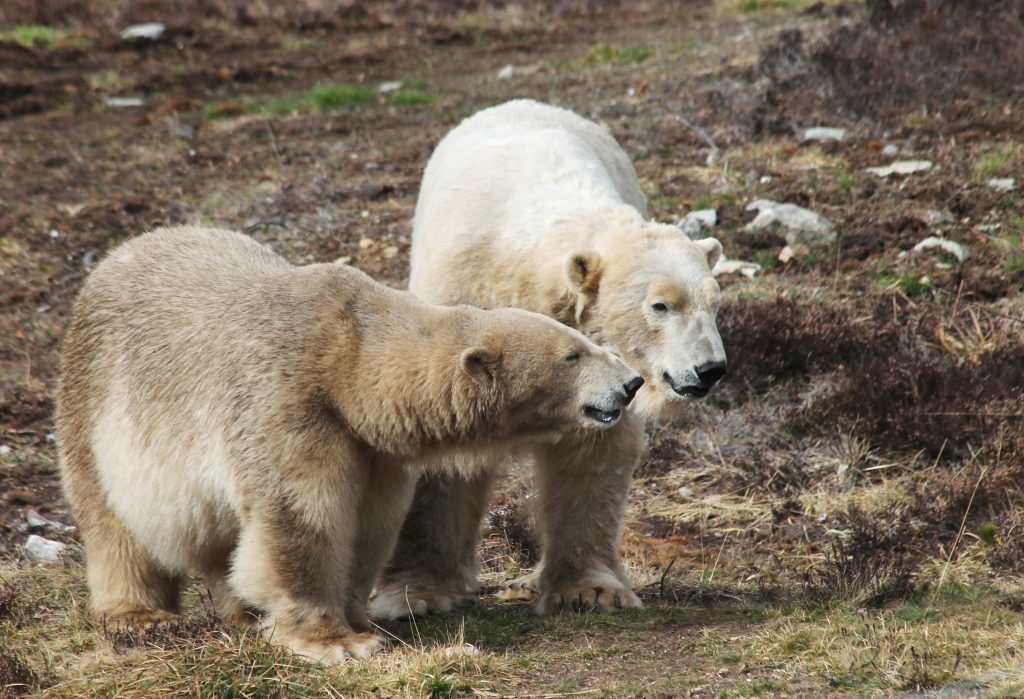FOR the first time in a quarter of a century, the UK is hearing the pitter patter of tiny polar bear paws.
The Royal Zoological Society of Scotland (RZSS) has announced that its resident female polar bear Victoria has given birth at the Highland Wildlife Park.
The charity described the new arrival as an “outstanding achievement which will have interest across the world”.
The RZSS stressed that the first three months are perilous for polar bear cubs, with Douglas Richardson, Head of Living Collections at RZSS Highland Wildlife Park, saying the mortality rate for young cubs can be as high as 50%.
Staff at the park confirmed the birth after hearing distinct high-pitched sounds from Victoria’s maternity den, which remains closed to visitors to ensure privacy.
Una Richardson, the park’s Head Keeper responsible for carnivores, said, “We first heard promising noises in the week before Christmas and these have now continued into the new year. Because we don’t have sight inside her cubbing box we can’t be sure if Victoria has had more than one cub but we can confirm the birth.
“While we are absolutely thrilled, we are not celebrating prematurely as polar bear cubs have a high mortality rate in the first weeks of life due to their undeveloped immune system and the mother’s exaggerated need for privacy, with any disturbance risking the cub being killed or abandoned.
“We will continue to monitor Victoria and very much hope for the best possible news when she emerges around March. Until then, Victoria’s enclosure will be closed to the public and keeper activity will be at a minimum to give her offspring every chance of survival.”
New-born polar bear cubs are blind, around 30cm long and weigh little more than a guinea pig.
They only open their eyes when they are a month old and are entirely dependent on their mother, feeding on fat-rich milk to grow quickly, weighing around ten to 12 kg by the time they leave their den.
Douglas Richardson said: “As most people will know, the situation for polar bears in the wild is becoming worse and worse because of climate change and resource use in the arctic.
“There is the possibility that at some point in this century bears from the captive population may be needed to augment what’s left of the wild population. And if we don’t have a healthy captive population we lose that option.”
The polar bear breeding season began in March last year, during which Victoria mated with Arktos, one of the park’s two males.
Arktos and Walker, the park’s other male polar bear, are hugely popular with visitors and the enclosure they share remains on view.
Barbara Smith, RZSS Chief Executive, said, “The birth of the first polar bear cub in the UK for a quarter of a century is an outstanding achievement which will arouse interest around the world. It is testament to the commitment and professionalism of our team and hugely exciting.
“At RZSS we believe we have a duty to help protect this magnificent species, with the reduction in sea ice, the polar bear’s primary seal hunting platform, predicted to significantly reduce numbers over the next 40 years.
“Our polar bears are part of the European Endangered Species Programme and we hope Victoria’s offspring will survive to reinforce the captive population, which may be needed in the future to augment and help restore a markedly reduced and fragmented wild population.”

Enjoy the convenience of having The Sunday Post delivered as a digital ePaper straight to your smartphone, tablet or computer.
Subscribe for only £5.49 a month and enjoy all the benefits of the printed paper as a digital replica.
Subscribe